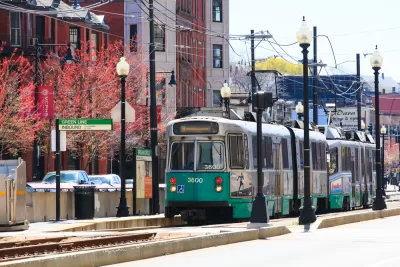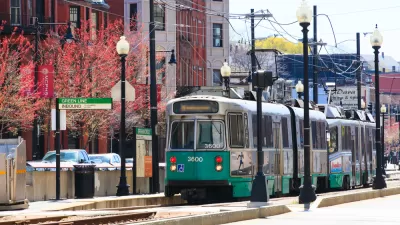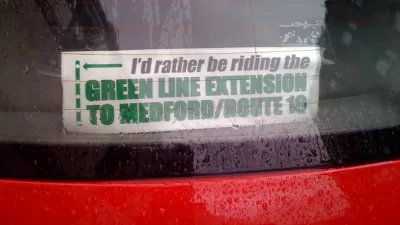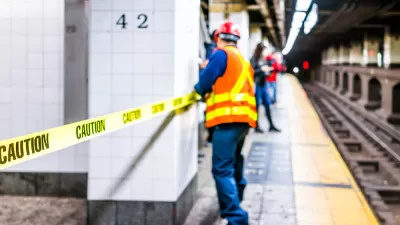Raising density around transit stations to a level already existing in some parts of the city would enable hundreds of thousands of new housing units in and around Boston, according to a thought experiment by the Massachusetts Housing Partnership.

"Housing-starved Massachusetts could add a quarter-million homes just by building more around MBTA stations," reports Tim Logan, reporting the analysis of a new study published this week by the Massachusetts Housing Partnership.
The nonprofit housing advocacy organization "studied and mapped development patterns around 284 stations on the Massachusetts Bay Transportation Authority’s rapid transit and commuter rail lines and found that more than 517,000 houses and apartments are within a half-mile of a station," explains Logan. The organization also created an online mapping tool to explore transit oriented development opportunities around MBTA stations.
A little more density, however, could make room for a lot more housing. "About 253,000 more could be added if land around all of the transit system’s stations averaged 10 housing units per acre, instead of the current 6.4."
Researchers at the organization describe the report as a thought experiment, but that speculative density of ten units per acre is already a reality around multiple transit stations on the MBTA system, as listed in the article.
FULL STORY: Report says land at T stations could handle 253,000 housing units — and ease traffic gridlock

Trump Administration Could Effectively End Housing Voucher Program
Federal officials are eyeing major cuts to the Section 8 program that helps millions of low-income households pay rent.

Planetizen Federal Action Tracker
A weekly monitor of how Trump’s orders and actions are impacting planners and planning in America.

The 120 Year Old Tiny Home Villages That Sheltered San Francisco’s Earthquake Refugees
More than a century ago, San Francisco mobilized to house thousands of residents displaced by the 1906 earthquake. Could their strategy offer a model for the present?

HSR Reaches Key Settlement in Northern California City
The state’s high-speed rail authority reached an agreement with Millbrae, a key city on the train’s proposed route to San Francisco.

Washington State Legislature Passes Parking Reform Bill
A bill that would limit parking requirements for new developments is headed to the governor’s desk.

Missouri Law Would Ban Protections for Housing Voucher Users
A state law seeks to overturn source-of-income discrimination bans passed by several Missouri cities.
Urban Design for Planners 1: Software Tools
This six-course series explores essential urban design concepts using open source software and equips planners with the tools they need to participate fully in the urban design process.
Planning for Universal Design
Learn the tools for implementing Universal Design in planning regulations.
Ada County Highway District
Clanton & Associates, Inc.
Jessamine County Fiscal Court
Institute for Housing and Urban Development Studies (IHS)
City of Grandview
Harvard GSD Executive Education
Toledo-Lucas County Plan Commissions
Salt Lake City
NYU Wagner Graduate School of Public Service





























